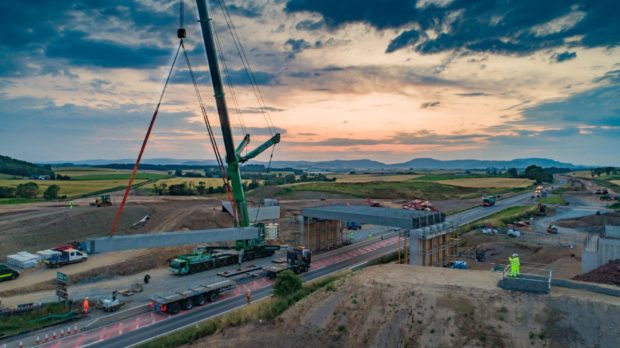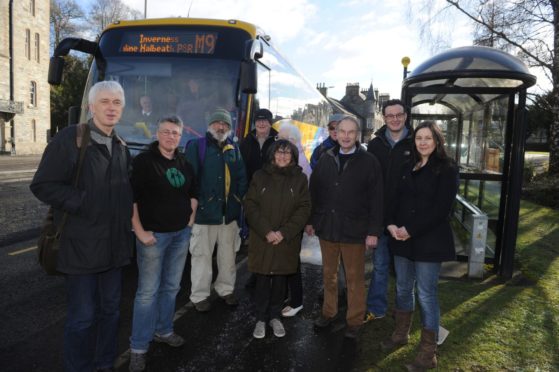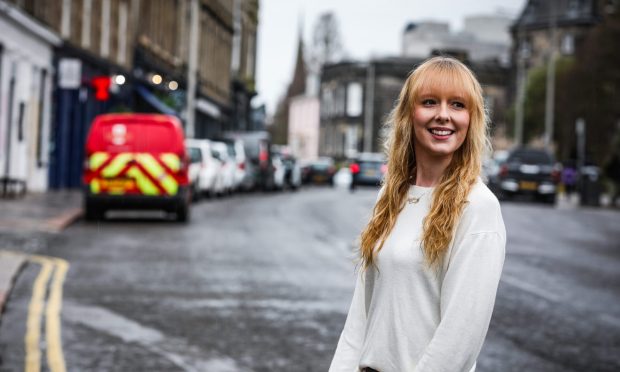Climate campaigners want an “urgent” roads spending review in Perthshire and the North East after the Scottish Government missed its latest emissions targets.
The Scottish Government had enshrined a 55% cut in law but new greenhouse gas figures showed the drop between 1990 and 2019 was only 51.5%.
Domestic transport was the largest source of net emissions – making up around a quarter of the total.
Jess Pepper is the external affairs manager at sustainable transport alliance Transform Scotland.
She called for an “urgent review” and “thorough climate impact assessment” on key infrastructure projects in Perthshire and the North East.
This includes the Cross Tay Link Road, the A9 dualling project and A96 dualling between Aberdeen and Inverness.
She questioned whether the Scottish Government could continue to support high carbon infrastructure projects and meet its own climate change targets.
The Birnam-based climate campaigner said: “Here we are with the biggest chunk of emissions coming from transport. That’s worse in Perth and Kinross than nationwide.
“Yet, in Perth and Kinross – as well as across the nation – we are proposing building more road capacity. We are not spending nearly the same amount improving what we have already or investing in sustainable or active travel.”
What are the SG’s climate promises?
The Scottish Government has pledged to create a “net zero” society by 2045.
Its interim target is to slash emissions by 75% by 2030.
The SG has recently restated its commitment to dualling the A9 and is supporting a further crossing across the Tay to open up land for business expansion in Perth and to tackle congestion.
Jess added: “Not only are we in a climate emergency. Not only have we missed the targets. But we are continuing to invest in high carbon infrastructure that makes the problem worse.
“We are increasing traffic, destroying woodland and digging up high carbon soils that act as a carbon sink.”
Who creates the most greenhouse gas?
The latest figures show business was the second largest contributor to greenhouse gas emissions in Scotland at over 16%, followed by agriculture at under 16% and energy supply at around 13%.
Tayside climate activists previously branded the 3.5% miss “a massive shortfall.”
The Scottish Parliament’s Green Recovery Inquiry also recommended prioritising investment in active and sustainable travel infrastructure rather than additional road capacity.
The Just Transition Commission advises the Scottish Government on how to reach net zero. It also recently advised redirecting transport spend toward low-carbon options.
Jess said more work was needed on the climate impact of each of the roads projects.
“They all need urgent review and a thorough climate impact assessment done on them. When the strategic environment assessment was done for the A9 dualling, climate impact was scoped out at the beginning.
“That assessment was never done properly. There needs to be a review of all these high carbon projects. That would be the Cross Tay Link Road, the A9 dualling and the A96.”
Where should SG invest instead?
The transport budget should be invested “in a system that really works for everyone – including 30% of households without access to a car.”
“This would enable us to reach our climate targets and help us build a fairer Scotland. It would create jobs in public transport services and manufacturing and improve public health,” Jess said.
Net zero secretary Michael Matheson updated parliament on the missed target after the the Scottish Government published the figures.
He pointed out they showed Scotland was more than halfway on its journey to net zero.
He said: “Whilst it is undoubtedly disappointing that the annual target has not been met, the figures do still show good progress.”











